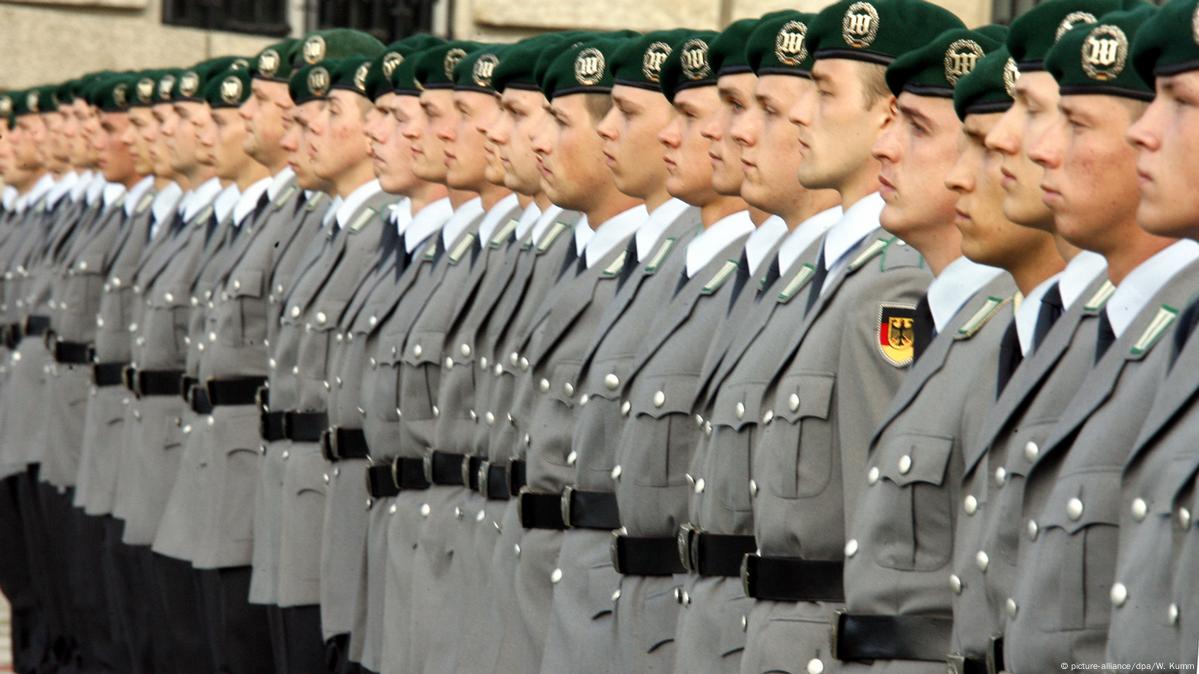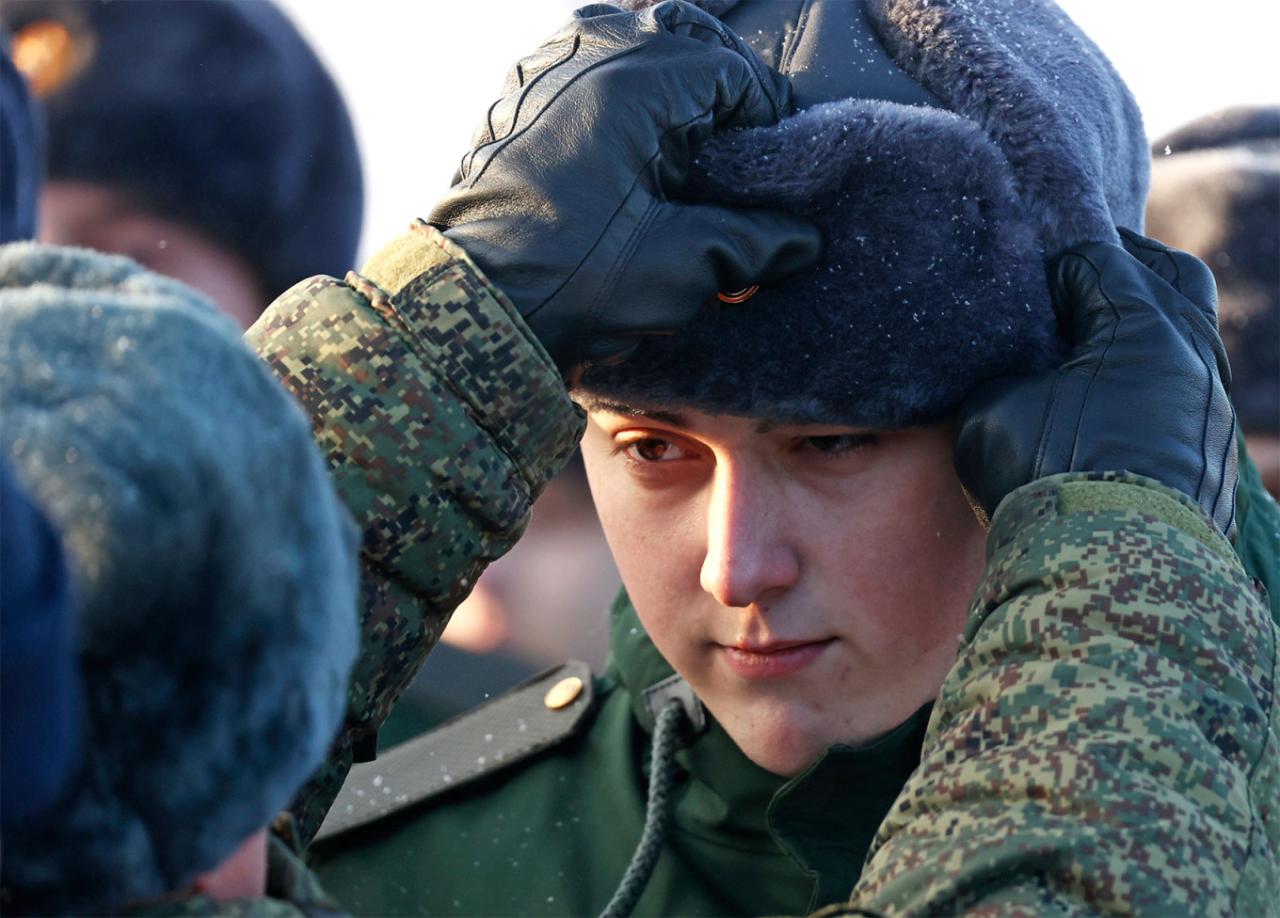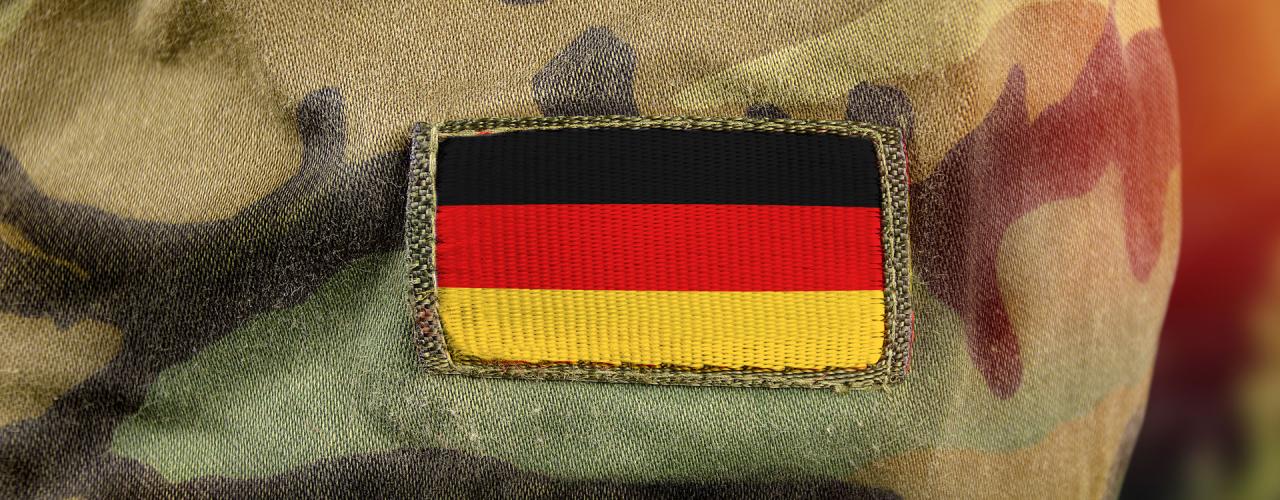
Germany Is Thinking About Bringing Back Conscription
Germany is thinking about bringing back conscription. This seemingly drastic move is sparking intense debate across the country and beyond. The idea, once unthinkable after the end of the Cold War, is now being seriously considered in light of Russia’s invasion of Ukraine and shifting geopolitical realities in Europe. This post will delve into the historical context, potential benefits and drawbacks, and the broader societal implications of such a monumental decision.
For decades, Germany’s military relied on a volunteer force. However, concerns about the country’s ability to meet its NATO commitments, coupled with the unpredictable security environment, have prompted a reassessment of its defense strategy. Reintroducing conscription would dramatically alter the landscape, impacting everything from national budgets to individual lives. We’ll examine the economic ramifications, public opinion, and the logistical hurdles involved in implementing such a sweeping change.
Historical Context of Conscription in Germany

Germany’s relationship with conscription is a complex and often controversial one, deeply intertwined with its history and national identity. The institution has been both a symbol of national unity and a source of significant social and political tension throughout the 20th and 21st centuries. Understanding its past is crucial to evaluating the current debate surrounding its potential reintroduction.The Prussian army, a forerunner to the unified German military, established a system of conscription in the 19th century.
This system, based on universal male military service, became a cornerstone of the German Empire’s military strength and contributed significantly to its rapid industrialization and modernization. However, the militaristic culture fostered by this system also played a role in the escalating tensions that led to World War I.
Conscription in the German Empire and the Weimar Republic
The conscription system of the German Empire, implemented in stages throughout the latter half of the 19th century, was a key element in the nation’s rise to a major European power. It created a large, well-trained standing army capable of rapid mobilization. This system, however, was not without its critics. Socialist and pacifist movements actively opposed conscription, viewing it as a tool of militarism and oppression.
The defeat in World War I and the subsequent establishment of the Weimar Republic led to a period of intense debate surrounding the future of the army and conscription. While conscription was initially maintained, its role and the size of the military were significantly reduced under the Treaty of Versailles. The limitations imposed by the treaty, coupled with the economic and political instability of the Weimar era, created a fertile ground for extremist ideologies that exploited anti-conscription sentiment for their own ends.
Germany’s considering bringing back conscription, a move that feels increasingly necessary given the current global instability. It makes you wonder if a lack of consequences is fueling some of these issues, as the Border Patrol Chief recently pointed out in this article: border patrol chief says no consequences are driving border crisis. Perhaps a stronger sense of national duty, fostered by conscription, could help address some of the underlying pressures contributing to these crises.
Conscription Under Nazism and its Aftermath
The Nazi regime reintroduced universal conscription, significantly expanding the size and power of the Wehrmacht. This massive military buildup was a key component of Nazi Germany’s aggressive foreign policy and ultimately contributed to the outbreak of World War II. The horrors of the war and the Nazi regime’s use of conscription to fuel its war machine had a profound impact on post-war Germany.
Germany’s considering conscription again, a move that feels wildly different from the situation depicted in how I became the Taliban’s portrait artist , a story about navigating unexpected cultural shifts. The contrast highlights how drastically different geopolitical realities shape individual experiences and national security decisions. It makes you wonder what forces are driving Germany towards this potentially controversial step.
The subsequent West German Bundeswehr, established in 1955, initially relied on a volunteer-based system, reflecting a deliberate effort to distance itself from the militaristic past. However, conscription was reintroduced in 1956, driven by the Cold War and the need for a strong defense against the Soviet Union.
The End of Conscription and the Transition to a Volunteer Army
The end of the Cold War significantly altered the security landscape in Europe. In 1990, Germany was reunified, and the conscription system, which had been maintained in both East and West Germany, faced increasing criticism. Concerns about its cost, its perceived incompatibility with modern military needs, and its impact on individual freedoms fueled the debate. Finally, in 2011, conscription was officially abolished in Germany, marking a significant shift towards a professional, all-volunteer army.
This transition was accompanied by extensive reforms aimed at modernizing the Bundeswehr and attracting qualified personnel.
Comparing the Conscription and Volunteer Systems
The previous conscription system emphasized quantity over quality. While it produced a large number of soldiers, the training period was relatively short, and the level of professional expertise was often limited. The current volunteer army prioritizes quality and professional development, offering competitive salaries, comprehensive training, and career progression opportunities. This system aims to attract highly skilled individuals and maintain a smaller, more highly trained force.
The social impact also differs considerably. Conscription affected a broad segment of the male population, creating a shared national experience. The volunteer system, however, attracts a more selective pool of individuals, potentially leading to a less representative military force.
Timeline of Significant Events Related to Conscription in Germany
Here’s a brief timeline highlighting key moments:
| Year | Event |
|---|---|
| 1871 | Conscription established in the newly unified German Empire. |
| 1918 | End of World War I and significant reduction of the military under the Treaty of Versailles. |
| 1935 | Reintroduction of conscription under the Nazi regime. |
| 1956 | Reintroduction of conscription in West Germany. |
| 1990 | German reunification and continued debate over conscription. |
| 2011 | Abolition of conscription in Germany. |
Current Geopolitical Landscape and its Influence

Germany’s consideration of reinstating conscription is inextricably linked to the dramatically shifting geopolitical landscape in Europe. The continent faces a level of instability not seen since the Cold War, forcing a reassessment of national security strategies across the board. This renewed focus on defense preparedness is driven largely by Russia’s invasion of Ukraine and the resulting anxieties about future aggression.The current security situation in Europe is characterized by heightened tensions and uncertainty.
Russia’s actions have shattered the post-Cold War security architecture, leaving many European nations feeling vulnerable. The war in Ukraine has demonstrated the devastating consequences of large-scale conflict on European soil and highlighted the potential for further escalation. This has prompted a significant reevaluation of defense capabilities and strategies across the continent, pushing many nations to increase defense spending and consider alternative defense models.
Germany’s considering bringing back conscription, a move that feels strangely relevant in our current climate. It makes you wonder if the skills gap, exacerbated by automation, is a factor; read this article about how machines might not take your job but they could make it worse , potentially creating a need for reskilling initiatives that conscription might inadvertently address.
Ultimately, the debate around conscription highlights anxieties about the future of work in a rapidly changing world.
NATO’s Role and Implications of Russia’s Actions
Russia’s invasion of Ukraine has profoundly impacted NATO’s role and Germany’s perception of its own military needs. The alliance has responded with increased military deployments to Eastern European member states, bolstering collective defense capabilities. Germany, despite its historical pacifism, has significantly increased its defense budget and pledged more military aid to Ukraine. The invasion has underscored the importance of a strong collective defense posture within NATO, and the necessity for Germany to play a more significant role in its collective security efforts.
The ongoing conflict necessitates a reassessment of Germany’s military capabilities in light of potential future threats from Russia, including hybrid warfare tactics, cyberattacks, and disinformation campaigns.
Potential Threats to German National Security and Conscription’s Potential Role
Several threats to German national security are being considered in the debate surrounding conscription. These include direct military aggression from Russia or other hostile actors, cyberattacks targeting critical infrastructure, and the spread of disinformation campaigns aimed at undermining societal cohesion. Proponents of conscription argue that it would significantly increase the size and readiness of the Bundeswehr (German Armed Forces), allowing for a more robust response to these threats.
They point to the need for a larger reserve pool of trained personnel to support active-duty forces in times of crisis, especially in scenarios requiring rapid mobilization and deployment. The argument is that a larger, more readily deployable force could act as a stronger deterrent against potential aggressors.
Comparison of German Military Capabilities with Other European Nations
Germany’s current military capabilities, while significantly improving, still lag behind some of its European counterparts, particularly in terms of personnel strength and overall readiness. Nations like France and the United Kingdom maintain larger standing armies and possess more advanced military technologies. However, Germany’s economic strength and technological prowess provide a significant foundation for future military expansion. The debate surrounding conscription is partly fueled by a desire to bridge the gap in military capabilities and ensure Germany can effectively contribute to collective defense within NATO and independently protect its national interests.
The comparison with other European nations serves as a benchmark to evaluate the effectiveness of potential defense strategies, including the reintroduction of conscription.
Public Opinion and Social Impact of Reintroducing Conscription
The debate surrounding the potential reintroduction of conscription in Germany is complex and deeply divides public opinion. Factors such as age, political affiliation, and personal experiences significantly influence individual perspectives, creating a multifaceted landscape of support and opposition. Understanding these differing viewpoints is crucial for assessing the potential social ramifications of such a significant policy shift.
Diverse Public Opinion on Conscription
Public opinion on conscription in Germany is far from monolithic. While some segments of the population view it favorably, others express strong reservations. Age plays a significant role; older generations, having experienced conscription firsthand, often hold more nuanced views, while younger generations largely lack this direct experience. Political affiliation also influences opinions, with more conservative parties tending to express greater support for conscription than left-leaning parties.
Furthermore, regional differences and personal experiences with military service (or lack thereof) within families contribute to the diversity of opinions. For example, those from families with a long history of military service may hold more positive views than those from families with pacifist traditions.
Hypothetical Public Opinion Poll on Conscription, Germany is thinking about bringing back conscription
A hypothetical public opinion poll could effectively gauge the current sentiment surrounding conscription. The poll could include questions such as:
- “Do you support the reintroduction of mandatory military service in Germany?” (with response options: Strongly Support, Support, Neutral, Oppose, Strongly Oppose)
- “How important is national defense to you?” (with response options: Very Important, Important, Somewhat Important, Not Important, Not at all Important)
- “Do you believe conscription would positively or negatively impact social equality?” (with response options: Positively, Negatively, No Impact)
- “What is your age range?” (with age brackets)
- “Which political party do you most identify with?” (with a list of major parties)
Expected outcomes would likely show a significant generational divide, with older respondents potentially showing higher support rates than younger respondents. Support might also correlate with political affiliation, with conservative voters expressing greater support. However, it’s important to note that these are hypothetical outcomes; the actual results would depend on the specific methodology and timing of the poll. For example, a poll conducted during a period of heightened geopolitical tension might yield different results than one conducted during a time of relative peace.
Social Impact of Reintroducing Conscription
The reintroduction of conscription would have profound social consequences. One significant impact would be on education. Conscription would necessitate a pause in education for young men, potentially delaying their entry into the workforce or higher education. This could exacerbate existing inequalities, particularly affecting those from lower socioeconomic backgrounds who may rely more heavily on timely educational progression.
The impact on employment would also be substantial. A period of mandatory military service could disrupt career trajectories and reduce overall workforce productivity during the conscription period. Furthermore, social equality could be affected depending on how conscription is implemented. If exemptions are granted disproportionately to certain groups, it could reinforce existing social inequalities. Conversely, a well-designed program that ensures equal opportunities for all could potentially foster a sense of national unity and social cohesion.
However, the potential for negative social impacts related to class and educational disparities needs careful consideration. Real-life examples from countries with similar conscription systems could provide insights into the potential challenges and benefits.
Economic Implications and Resource Allocation: Germany Is Thinking About Bringing Back Conscription

Reintroducing conscription in Germany would have profound economic consequences, impacting both the national budget and the broader economy. The shift from a volunteer-based Bundeswehr to a conscript army necessitates a careful analysis of costs, benefits, and resource allocation to determine its overall feasibility and long-term sustainability. This analysis needs to go beyond simply comparing the immediate financial outlay and consider broader societal effects.The estimated costs associated with reintroducing conscription are substantial and multifaceted.
Direct costs include the salaries of conscripts (though lower than professional soldiers), the provision of training facilities, equipment, uniforms, and living accommodations. Indirect costs include the opportunity cost of conscripts’ lost productivity in the civilian workforce, the potential strain on the healthcare system due to training injuries, and the need for additional administrative personnel to manage the conscription process.
These costs must be carefully weighed against the potential benefits.
Cost Comparison: Conscript vs. Volunteer Army
A direct comparison between the costs of a conscript army and the current volunteer army is challenging due to the inherent differences in their structures and operational models. A volunteer army, while more expensive per soldier, offers greater operational efficiency and experience. A conscript army, while potentially cheaper per soldier in terms of salary, requires significant investment in initial training and infrastructure to accommodate a larger, less experienced force.
Studies from other nations with conscription systems, such as Switzerland or Israel, suggest that while the per-soldier cost might be lower, the overall budgetary impact could be comparable or even higher due to the sheer size of the conscript force and the associated infrastructure requirements. For example, Switzerland’s system, while effective, places a significant burden on the national budget, particularly in terms of maintaining training facilities and equipment for a large, periodically renewed force.
A realistic cost comparison for Germany would require detailed modelling considering the size of the conscript force, training duration, and the level of equipment modernization.
Potential Economic Benefits and Drawbacks of Conscription
Conscription could offer some economic benefits, such as a larger, readily available pool of personnel for national defense. This might reduce reliance on expensive private military contractors and potentially lead to lower long-term defense spending if the conscript system is efficiently managed. However, the economic drawbacks are potentially significant. The loss of skilled labor from the civilian workforce during the conscription period could hamper economic growth.
Businesses might face recruitment difficulties, and the national productivity could decrease. Moreover, the significant upfront investment in training infrastructure and equipment could strain the national budget, potentially diverting resources from other crucial sectors like education or healthcare. A careful cost-benefit analysis is needed to evaluate the overall economic impact.
Projected Budgetary Allocations for a Conscript Army
The following table provides a hypothetical breakdown of budgetary allocations for various aspects of a conscript army in Germany. These figures are estimations and should be considered illustrative rather than precise predictions. Actual costs would depend on various factors, including the size of the conscript force, the length of service, and the level of equipment modernization.
| Category | Estimated Annual Budget (in billions of Euros) | Percentage of Total Budget | Notes |
|---|---|---|---|
| Personnel Costs (Salaries, Benefits) | 10 | 30% | Includes salaries for conscripts, officers, and support staff. |
| Training and Infrastructure | 8 | 24% | Covers training facilities, equipment, and living accommodations. |
| Equipment and Modernization | 10 | 30% | Includes weapons, vehicles, and technology upgrades. |
| Administration and Support | 4 | 16% | Covers administrative personnel, medical services, and logistics. |
The potential return of conscription in Germany is a complex issue with far-reaching consequences. While bolstering military strength is a key driver, the decision must carefully weigh economic costs, social impact, and public sentiment. Ultimately, the debate highlights a fundamental question: how can Germany best ensure its national security in an increasingly uncertain world? The answer, whatever it may be, will profoundly shape the future of the country and its role within the European Union and NATO.

